Address
304 North Cardinal
St. Dorchester Center, MA 02124
Work Hours
Monday to Friday: 7AM - 7PM
Weekend: 10AM - 5PM
Address
304 North Cardinal
St. Dorchester Center, MA 02124
Work Hours
Monday to Friday: 7AM - 7PM
Weekend: 10AM - 5PM
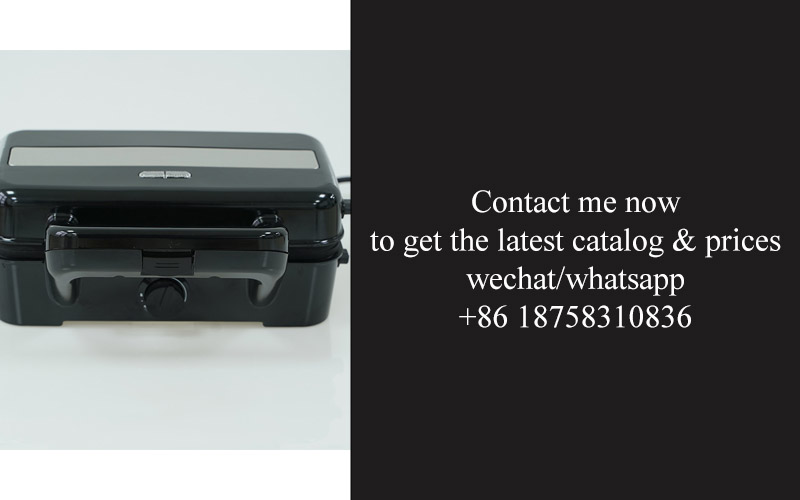
In a world where culinary trends shift as swiftly as the seasons, the kitchen has become a battlefield for innovation. Among the myriad of kitchen appliances vying for attention, the industrial panini press has quietly emerged as a game-changer. This unassuming appliance has transcended its humble origins, becoming a staple in both home and commercial kitchens. Its versatility, durability, and the ability to deliver consistent, high-quality results have captured the imagination of chefs and home cooks alike. Let’s delve into the journey of the industrial panini press, exploring its evolution, the technology behind it, and how it’s reshaping the way we think about cooking.
The Industrial Panini Press has emerged as a game-changer in the kitchen appliances market, redefining the way we think about grilled sandwiches. This sleek and powerful machine has not only captured the attention of home cooks but has also made a significant impact on the commercial kitchen scene. Let’s dive into what makes this phenomenon so captivating.
In recent years, the demand for quick and convenient food options has surged, and the industrial panini press has perfectly aligned with this trend. Its ability to deliver a perfectly toasted, crispy, and mouthwatering sandwich in minutes has won over countless fans. But it’s not just about speed; the quality and texture of the sandwiches it produces are exceptional, often surpassing those found in traditional grills or toasters.
The design of modern industrial panini presses is both functional and stylish. With their sleek, stainless steel exteriors and user-friendly interfaces, these appliances are a delight to have in any kitchen. The adjustable temperature controls and non-stick surfaces ensure that every sandwich is cooked to perfection without sticking or burning.
But what truly sets the industrial panini press apart is its versatility. While originally designed for sandwiches, these presses can handle a variety of foods, from burgers and wraps to even small pizzas. This adaptability has made them a favorite among busy chefs and food service professionals who need to serve a diverse menu in a short amount of time.
In the realm of commercial kitchens, the industrial panini press has become a staple. Fast-food chains, cafes, and delis rely on these appliances to keep up with the demand for quick-service sandwiches. The ability to serve a large volume of customers efficiently is a major draw, but the consistency and quality of the product are what keep them coming back.
The market for industrial panini presses is not just growing; it’s evolving. New models are hitting the shelves with advanced features that cater to the needs of both professional chefs and home enthusiasts. For instance, some presses now come with built-in timers, allowing for precise control over cooking times, and others offer dual-sided cooking capabilities for a more even toast.
Behind this surge in popularity lies a wealth of data and trend analysis. The kitchen appliances industry has seen a shift towards innovation and technology, and the industrial panini press is a testament to this trend. Consumers are increasingly seeking appliances that not only perform well but also offer a touch of modern technology and convenience.
When it comes to the consumer side, the industrial panini press has tapped into a desire for homemade flavors without the hassle. It allows families to enjoy freshly made sandwiches that taste like they came from a gourmet restaurant, all from the comfort of their own kitchen. The ease of use and the ability to customize each sandwich make it a hit with foodies and health-conscious individuals alike.
The success of the industrial panini press is also a reflection of the changing landscape of the kitchen appliances industry. There’s a growing focus on sustainability and eco-friendly design, and many industrial panini presses are now made with materials that are easy to clean and durable, reducing waste and extending the life of the appliance.
Looking ahead, the future of the industrial panini press is bright. As technology continues to advance, we can expect to see even more innovative features that enhance the user experience. From improved heating elements that provide faster cooking times to smart features that can be controlled via an app, the possibilities are endless.
In conclusion, the industrial panini press has become more than just a kitchen gadget; it’s a symbol of the evolving culinary landscape. Its ability to deliver high-quality, quick, and versatile food solutions has solidified its place in the hearts of food lovers everywhere. Whether in a bustling commercial kitchen or a cozy home kitchen, the industrial panini press is here to stay, revolutionizing the way we enjoy our favorite grilled sandwiches.

An industrial panini press is not just a kitchen appliance; it’s a game-changer. What sets it apart from its domestic counterparts? Let’s dive into the key factors that make an industrial panini press truly unique.
The first thing that jumps out about an industrial panini press is its robust build. Crafted from high-quality stainless steel, these presses are designed to withstand the rigors of commercial use. This durability ensures that the machine can handle continuous use in busy kitchens without faltering, making it an excellent investment for restaurants, cafes, and food trucks.
Efficiency is another standout feature. Industrial panini presses are engineered for speed and consistency. With adjustable heat settings and rapid heating capabilities, these machines can cook multiple panini sandwiches in quick succession, keeping up with the demands of high-volume service. The even heat distribution across the cooking surface ensures that every sandwich is cooked to perfection.
The size and capacity of an industrial panini press are also noteworthy. These presses are larger than the typical home models, often featuring double or triple grill plates to accommodate multiple sandwiches at once. This is a significant advantage for establishments looking to serve a steady stream of customers without slowing down the line.
One of the most innovative aspects of industrial panini presses is their ability to cater to a variety of ingredients and preparation styles. From traditional ham and cheese to gourmet creations with fresh vegetables and spreads, these presses can handle it all. The adjustable pressure allows for the perfect texture, whether you prefer a crispy crust or a softer, meltier sandwich.
Safety features are a priority in industrial kitchen appliances. These panini presses come equipped with automatic shut-off functions and overheat protection, reducing the risk of accidents and extending the life of the machine. The non-slip feet and ergonomic handles make it easier to use and maintain, further enhancing the safety aspect.
Innovation extends to the design of the cooking plates. Many industrial panini presses feature non-stick surfaces, which not only make cleaning a breeze but also prevent food from sticking and burning, ensuring the quality of each sandwich. Some models even include removable plates for easy cleaning and maintenance.
The versatility of an industrial panini press is unmatched. These machines can not only cook panini but also serve as a versatile tool for grilling, toasting, and even searing. This adaptability means that a single investment can cater to multiple menu items, reducing the need for additional equipment and streamlining kitchen operations.
Energy efficiency is also a crucial factor. With energy-saving features and the ability to heat up quickly, industrial panini presses can save on electricity costs without compromising on performance. This is especially important for businesses looking to reduce their environmental footprint and lower operational expenses.
Another advantage is the ease of maintenance. The design of these presses often includes features like drip trays to catch excess oil and grease, making cleanup less of a chore. Additionally, the durable construction means that the press can withstand the wear and tear of daily use without losing its functionality.
Finally, the aesthetic appeal of an industrial panini press should not be overlooked. These machines are often sleek and modern, fitting into any kitchen environment. Their clean lines and professional appearance not only contribute to the overall look of the kitchen but also reflect the high-quality standards of the establishment using them.
In summary, what makes an industrial panini press stand out is its combination of durability, efficiency, size, versatility, safety, design, energy efficiency, ease of maintenance, and aesthetic appeal. It’s a powerful tool that can elevate the quality of a menu and the customer experience, making it a must-have for any commercial kitchen.

Modern industrial panini presses have transcended their humble origins to become a staple in commercial kitchens worldwide. These appliances are not just for making sandwiches; they are a symbol of innovation and efficiency. Let’s delve into some of the standout features that set these industrial marvels apart.
Their sleek designs are not just for show; they are engineered to enhance functionality. Many industrial panini presses feature a compact and space-saving form factor, making them perfect for busy kitchens where every square inch counts. The slim profile ensures that these presses can be tucked away easily, yet they are robust enough to withstand the rigors of a commercial kitchen environment.
One of the most remarkable features of modern industrial panini presses is their variable temperature control. No longer are you confined to a single setting; these presses allow chefs to adjust the heat to perfection. Whether you’re grilling a classic ham and cheese sandwich or searing a gourmet panini with sautéed vegetables, the precise temperature control ensures that every component is cooked to the desired level of crispness and doneness.
The non-stick surfaces are another game-changer. These surfaces are designed to prevent food from sticking, which not only simplifies cleaning but also extends the life of the press. The smooth, durable coating allows for a clean release every time, which is especially important in a kitchen where hygiene is paramount.
Speed is of the essence in a commercial kitchen, and modern industrial panini presses deliver on this front. These appliances are engineered to cook sandwiches quickly, minimizing wait times for customers. The rapid heat-up time means that the press can be ready to use in a matter of seconds, ensuring that the food is hot and ready to serve promptly.
Durability is a key factor in industrial equipment, and these panini presses are built to last. They are constructed with heavy-duty materials that can withstand the intense heat and pressure of continuous use. The frames are often made from stainless steel, which is not only robust but also resistant to corrosion, ensuring that the press will maintain its integrity over time.
Safety features are also a priority in industrial panini presses. Many models come equipped with safety locks to prevent accidental operation when the press is not in use. This is crucial in a kitchen setting where safety is a top concern. Additionally, some models include automatic shut-off functions that activate after a predetermined period of inactivity, reducing the risk of overheating and potential fires.
The versatility of modern industrial panini presses is undeniable. They are not limited to just sandwiches; many can be used to cook a variety of other foods. From grilled cheese to paninis with fillings like vegetables, meats, and cheese, these presses can handle a wide array of recipes. Some models even have adjustable plates to accommodate different sizes and types of food items.
Ease of maintenance is another key feature that sets these presses apart. The removable plates and parts make cleaning a breeze. No more struggling with stuck-on food or a complicated disassembly process. With just a few wipes and a quick rinse, these presses are ready for their next use.
In terms of energy efficiency, these industrial panini presses are designed to be as eco-friendly as possible. They are equipped with energy-saving technologies that reduce power consumption without compromising on performance. This not only helps to lower operating costs but also contributes to a greener kitchen environment.
Lastly, the user interface of modern industrial panini presses is often straightforward and intuitive. Large, easy-to-read displays and simple control panels make it a breeze for kitchen staff to adjust settings and monitor cooking progress. This user-friendly design minimizes training time and ensures consistent results every time.
In summary, the innovative features of modern industrial panini presses make them an indispensable tool in any commercial kitchen. From their space-saving designs and precise temperature control to their durability, safety features, versatility, and energy efficiency, these appliances are a testament to how far technology has come in enhancing the culinary experience.
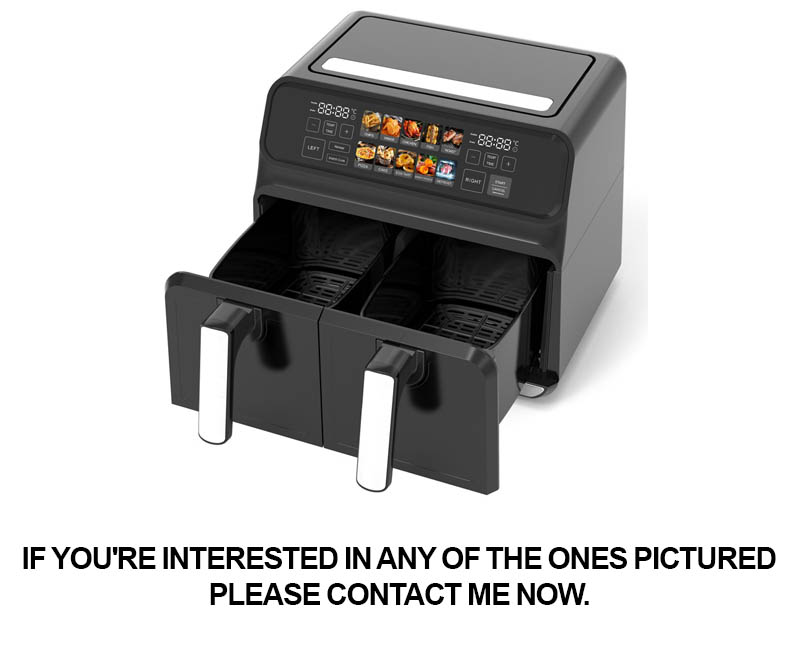
In the ever-evolving landscape of the kitchen appliances industry in Europe and the United States, several ongoing trends are shaping the market dynamics. From smart technology integration to an emphasis on sustainability, here’s a closer look at the trends that are currently driving this sector.
Smart Kitchen Appliances: The fusion of technology and cooking has led to a surge in smart kitchen appliances. These devices offer connectivity, allowing users to control their appliances remotely through smartphones or tablets. From smart ovens that can adjust cooking times based on the weather to fridges that can order groceries automatically, the integration of smart technology is not just a convenience but a necessity for modern kitchens.
Health and Wellness Focus: With health consciousness on the rise, kitchen appliances are increasingly designed to support healthier lifestyles. Induction cooktops are gaining popularity due to their energy efficiency and the fact that they reduce the risk of chemical leaching compared to traditional cookware. Similarly, high-speed blenders and food processors are making it easier for consumers to prepare nutritious meals at home.
Sustainability and Eco-Friendly Designs: Sustainability is a key driver in the kitchen appliances industry. Brands are focusing on eco-friendly materials, energy-efficient designs, and the longevity of their products. This includes the use of recycled materials, energy-saving modes, and the development of appliances that are easier to recycle at the end of their life cycle.
Compact and Multi-Functional Appliances: As urban living spaces become more compact, there’s a growing demand for kitchen appliances that are not only efficient but also space-saving. Multi-functional appliances that can perform multiple tasks are becoming increasingly popular. For example, a single countertop unit might serve as a toaster, oven, and grill, catering to the needs of smaller kitchens or busy lifestyles.
Customization and Personalization: Consumers are looking for more personalized experiences in their kitchen appliances. This includes customizable settings and programmable features that allow users to tailor the appliance to their specific needs. For instance, ovens with customizable temperature curves or coffee makers with adjustable brewing times are becoming more common.
Smart Storage Solutions: Alongside the appliances themselves, there’s a trend towards smart storage solutions. This includes appliances with built-in storage, such as refrigerators with spacious shelves and freezers with hidden storage compartments. Smart shelves and bins that track the freshness of produce are also gaining traction.
Integration with Smart Homes: The kitchen is becoming a central hub in the smart home ecosystem. Appliances that can be integrated with home automation systems are in high demand. This allows for a cohesive and efficient home environment where appliances can communicate with each other and adjust their settings based on the overall needs of the household.
Professional Quality at Home: There’s a trend towards bringing professional-grade appliances into the home kitchen. This includes high-end ranges, professional-grade mixers, and even commercial dishwashers that offer the power and precision needed for serious cooking and baking.
Increased Use of IoT (Internet of Things): The Internet of Things (IoT) is expanding into the kitchen appliances sector. Appliances that can connect to the internet to receive updates, provide analytics, and offer predictive maintenance are becoming more prevalent. This not only enhances user experience but also contributes to the longevity and efficiency of the appliance.
Shift Towards Energy-Efficient Lighting: Lighting in kitchen appliances is also becoming a point of focus. Energy-efficient LED lighting is replacing traditional bulbs, not only for energy savings but also for providing a better lighting experience that reduces eye strain and enhances visibility.
These trends reflect the dynamic nature of the kitchen appliances industry, where innovation and consumer demands are constantly reshaping the market. As technology continues to advance, we can expect to see further developments that not only improve the functionality of kitchen appliances but also enhance the overall cooking experience.
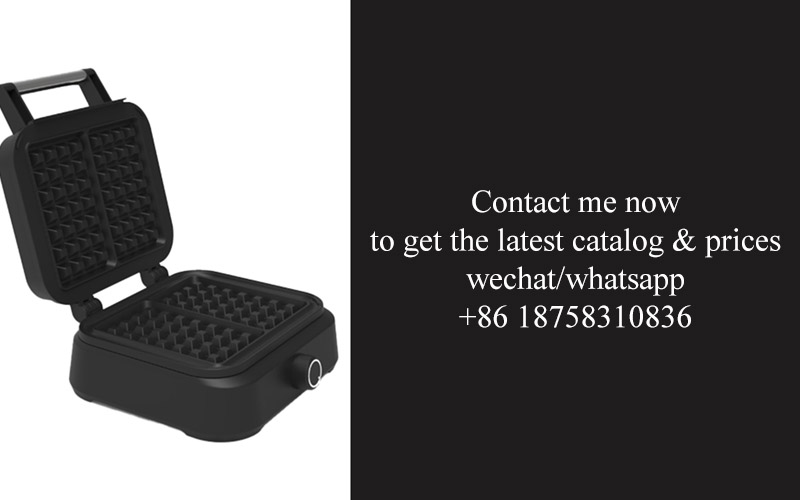
In the ever-evolving landscape of the kitchen appliances industry, understanding consumer needs is paramount. The role of data in product development cannot be overstated, as it provides a roadmap for innovation and success. By delving into the nuances of consumer behavior, companies can create products that not only meet but exceed expectations.
Consumer preferences are shaped by a multitude of factors, from convenience to sustainability. Data analytics allows companies to sift through vast amounts of information, identifying patterns and insights that might otherwise remain hidden. For instance, by analyzing sales data, manufacturers can pinpoint which features are most valued by customers and tailor their products accordingly.
One significant trend is the increasing demand for smart kitchen appliances. Consumers are looking for devices that not only perform well but also integrate with their digital lives. Data from smart home adoption rates and customer feedback on connectivity features highlight this shift. Companies that invest in developing appliances with Wi-Fi capabilities, voice control, and app integration are likely to see a positive response from the market.
Moreover, the rise of health-conscious consumers has driven a surge in demand for kitchen appliances that facilitate healthy cooking methods. Data on sales of air fryers, slow cookers, and steam ovens has soared, reflecting a preference for low-fat, low-calorie cooking. By analyzing this data, manufacturers can focus on improving these appliances’ performance and user experience.
Another critical aspect of consumer needs is usability. Data gathered through user testing and feedback can reveal common pain points, such as complicated interfaces or difficult-to-clean surfaces. By addressing these issues, manufacturers can create appliances that are intuitive and easy to maintain, leading to higher customer satisfaction and loyalty.
Customization is also a key driver in product development. Data from market research can uncover specific preferences within different consumer segments. For example, professional chefs might value durability and precise temperature control, while home cooks might prioritize speed and ease of use. By offering a range of products that cater to these diverse needs, companies can capture a broader market share.
Sustainability is another area where data plays a crucial role. Consumer awareness of environmental issues has led to a growing preference for eco-friendly appliances. Data on energy efficiency, recyclability, and the sourcing of materials can guide manufacturers in creating sustainable products that align with these values. This not only appeals to environmentally conscious consumers but also helps companies position themselves as socially responsible brands.
The rise of social media and online reviews has also provided a wealth of data on consumer sentiment. By monitoring these platforms, companies can gain real-time insights into what customers love and what they dislike about their products. This can lead to rapid iterations and improvements, ensuring that products remain relevant and competitive.
In the realm of product development, data is not just a tool; it’s a compass. It helps navigate the complex terrain of consumer preferences, market trends, and technological advancements. By leveraging data effectively, companies can make informed decisions that drive innovation, enhance customer satisfaction, and ultimately lead to long-term success.
From the integration of smart technology to the adoption of sustainable practices, the kitchen appliances industry is constantly evolving. Data-driven insights enable companies to stay ahead of the curve, anticipating future needs and developing products that resonate with consumers. By understanding the role of data in product development, manufacturers can continue to deliver appliances that not only meet but exceed the expectations of today’s discerning consumers.

In the competitive landscape of kitchen appliances, the industrial panini press has carved out a niche for itself, becoming a staple in both commercial kitchens and home setups. Let’s delve into a case study that highlights the success of these versatile machines.
The Rise of the Panini PressIndustrial panini presses have seen a surge in popularity, thanks to their ability to cater to a variety of culinary needs. From quick sandwiches to gourmet melts, these presses have become a favorite among foodservice operators and home chefs alike.
Design and FunctionalityOne of the key factors behind the success of industrial panini presses is their design. These presses are engineered to provide even heat distribution, ensuring that every bite is perfectly toasted. Features like adjustable heat settings and non-stick surfaces have made them a preferred choice for those looking for a high-quality cooking experience.
Customization for Different MarketsThe market for industrial panini presses is diverse, and manufacturers have responded by offering a range of models tailored to different needs. For instance, some presses are designed for high-volume operations, with features like rapid heat-up times and durable construction. Others are more compact, making them ideal for countertop use in smaller establishments.
Consumer Feedback and AdaptationSuccess in the kitchen appliance industry often hinges on listening to consumer feedback. Companies that produce industrial panini presses have been quick to adapt based on customer needs. For example, many models now come with safety features like cool-touch handles and automatic shut-off, addressing concerns about user safety.
Innovation in MaterialsThe materials used in industrial panini presses have also evolved. Modern presses often feature high-quality stainless steel for durability and a sleek look. Some models even incorporate advanced materials that reduce heat loss and improve energy efficiency, making them more cost-effective for businesses.
Marketing StrategiesEffective marketing has played a crucial role in the success of industrial panini presses. Companies have leveraged social media, influencer partnerships, and targeted advertising to showcase the benefits of their products. The use of customer testimonials and before-and-after photos has helped build trust and credibility.
Collaboration with Chefs and Industry ExpertsTo stay ahead of the curve, manufacturers of industrial panini presses often collaborate with chefs and industry experts. This partnership allows them to gain insights into the latest culinary trends and incorporate these into their product designs. Chefs’ endorsements can significantly boost sales and enhance brand reputation.
Global ExpansionThe success of industrial panini presses has not been confined to a single market. Companies have successfully expanded their reach globally, adapting their products to meet the specific needs of international customers. This global approach has opened up new opportunities and has contributed to the continued growth of the brand.
Customer Service and SupportExceptional customer service has been a cornerstone of the success story of industrial panini presses. Manufacturers understand that a reliable product is just the beginning. Offering comprehensive support, including warranty coverage and easy-to-access customer service, has helped in building long-term relationships with customers.
The Role of TechnologyFinally, the integration of technology has been instrumental in the success of industrial panini presses. From touch-screen interfaces that allow for precise temperature control to smart features that can be controlled remotely, technology has made these presses more user-friendly and efficient.
In conclusion, the success of industrial panini presses is a testament to the power of innovation, customer-centric design, and a commitment to quality. By staying attuned to market trends and continuously improving their products, manufacturers have managed to capture the hearts and minds of consumers worldwide.

The industrial panini press market has expanded beyond expectations, offering a versatile solution that transcends the boundaries of home kitchens and commercial settings. This evolution has been driven by a keen understanding of consumer needs and a willingness to adapt to various environments.
Commercial kitchens, once dominated by traditional grills and ovens, have found a new ally in the industrial panini press. These robust machines are designed to handle high volumes, ensuring consistent results day in and day out. Their ability to quickly cook a variety of sandwiches, wraps, and other pressed dishes has made them a staple in fast-casual restaurants, delis, and food trucks.
In the realm of home appliances, the industrial panini press has become a sought-after item for enthusiasts and busy professionals alike. Its compact size and powerful performance make it an ideal choice for those who love to experiment with different recipes or need a quick, convenient meal option. The versatility of these presses is not limited to sandwiches; they can also cook pizzas, quesadillas, and even desserts like tarts and pastries.
The design of modern industrial panini presses has been tailored to accommodate both spaces and users. Many models feature adjustable heat settings, allowing for customization of cooking temperatures. This is particularly important in commercial settings where different types of bread and fillings may require specific heat levels to achieve the perfect texture and color.
One of the standout features of these presses is their non-stick surfaces, which not only make cleanup a breeze but also ensure that food releases easily, maintaining its shape and integrity. This is a significant advantage in both home and commercial environments, where the ability to maintain food quality is paramount.
In the commercial sector, the durability of industrial panini presses is a key factor. These machines are built to withstand the rigors of constant use, with heavy-duty construction and components that can handle the stress of a busy kitchen. The stainless steel exteriors are not only attractive but also easy to clean, contributing to a hygienic cooking environment.
For home users, the ease of use is another selling point. Many industrial panini presses come with user-friendly features such as automatic shut-off functions, which prevent overheating and potential fires. The sleek designs often include clear temperature displays and intuitive controls, making them accessible to all levels of cooks.
The industrial panini press market has also seen the integration of technology. Some models now come with digital controls, which provide precise temperature readings and allow for the programming of cooking sequences. This level of control is particularly beneficial for commercial kitchens that require consistency in their output.
The versatility of industrial panini presses is further enhanced by their ability to accommodate different sizes of food. Whether it’s a single serving or a large batch, these presses can be adjusted to fit the need. This feature is especially useful in settings where portion control is important, such as schools, hospitals, and corporate cafeterias.
Another trend in the market is the inclusion of additional functionalities. Some industrial panini presses now come with features like adjustable pressure, allowing for a variety of cooking styles from light to intense. This flexibility opens up new possibilities for chefs and home cooks to explore different culinary techniques.
The environmental impact of kitchen appliances is also a growing concern. As such, manufacturers are increasingly focusing on energy efficiency. Industrial panini presses that consume less power not only reduce operational costs but also contribute to a greener planet.
In conclusion, the industrial panini press market has become a testament to the power of innovation and adaptability. By catering to both home and commercial needs, these versatile appliances have carved out a niche for themselves in the competitive kitchen appliances industry. As consumer preferences continue to evolve, it’s clear that the industrial panini press will remain a staple in the quest for convenient, delicious, and efficient cooking solutions.

Industrial kitchen appliances have long been a cornerstone of commercial cooking, but the landscape is evolving with a growing emphasis on sustainability and eco-friendly design. This shift is not only driven by environmental concerns but also by consumer demand and the need for businesses to reduce operational costs. Here’s a closer look at how sustainability is being integrated into the design of industrial kitchen appliances.
The integration of energy-efficient components has become a standard practice in the development of new industrial kitchen appliances. From induction burners to LED lighting, manufacturers are constantly seeking ways to minimize energy consumption. These energy-saving features not only reduce the environmental footprint but also lead to significant cost savings over time for commercial kitchens.
Materials used in the construction of industrial appliances are undergoing a transformation. Traditional materials like stainless steel are still prevalent, but there’s a noticeable trend towards the use of recycled metals and plastics. Recyclable materials not only help in reducing waste but also contribute to the circular economy, making the appliances more sustainable throughout their lifecycle.
Innovative insulation technologies are making their way into the design of industrial kitchen appliances. By improving the thermal efficiency of appliances like ovens, grills, and refrigerators, these technologies reduce energy loss and decrease the need for constant re-heating or cooling. This not only saves energy but also extends the life of the appliance, making it a more eco-friendly choice.
The design of industrial appliances is also focusing on modular construction. Modular designs allow for easier disassembly and recycling at the end of the appliance’s life. This approach simplifies the recycling process, as individual parts can be separated and recycled independently, reducing the overall environmental impact.
Water conservation is another critical aspect of sustainability in industrial kitchen appliances. Manufacturers are incorporating features like water-efficient dishwashers and steamers that use less water per cycle. These appliances not only help businesses save on water costs but also contribute to the conservation of this precious resource.
The adoption of smart technology in industrial kitchen appliances is not just about convenience; it’s also about sustainability. Smart appliances can optimize energy and water usage, reducing waste and operational costs. For example, smart refrigeration systems can adjust their temperature settings based on actual usage, ensuring that energy is not wasted on cooling unneeded spaces.
Eco-friendly materials such as bamboo, which is fast-growing and renewable, are being used in the construction of certain industrial kitchen appliances. These materials not only have a lower carbon footprint but also add a unique aesthetic to the appliances, appealing to environmentally conscious businesses and consumers.
Regulatory compliance is a driving force behind the push for sustainability in industrial kitchen appliances. As governments around the world implement stricter environmental regulations, manufacturers are responding by creating appliances that meet or exceed these standards. This not only ensures legal compliance but also positions businesses as responsible corporate citizens.
Consumer awareness and preference are increasingly influencing the design and production of industrial kitchen appliances. Many businesses are choosing eco-friendly appliances not just to reduce their environmental impact but also to appeal to a growing segment of consumers who prioritize sustainability in their purchasing decisions.
The design phase of industrial kitchen appliances is now more focused on longevity and ease of maintenance. Appliances built to last longer with minimal wear and tear reduce the frequency of replacements, which in turn reduces waste and the need for new materials.
The integration of renewable energy sources into industrial kitchen appliances is also on the rise. Solar-powered ovens and grills are becoming more common, allowing commercial kitchens to tap into clean, renewable energy and reduce their reliance on the grid.
In conclusion, the shift towards sustainability and eco-friendly design in industrial kitchen appliances is a multifaceted approach that touches on energy efficiency, material choice, technology integration, and consumer preference. As businesses continue to prioritize environmental responsibility, the market for sustainable kitchen appliances is expected to grow, offering more options for commercial kitchens to operate efficiently and in harmony with the environment.
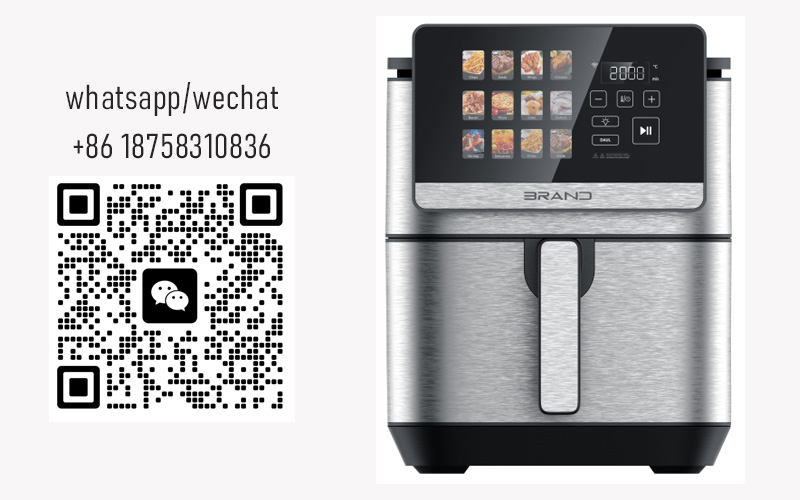
In the evolving landscape of industrial kitchen appliances, the industrial panini press has emerged not just as a tool for creating delicious sandwiches, but as a symbol of innovation and efficiency. As we look ahead, several key trends and advancements are shaping the future of these versatile machines.
The integration of smart technology is one such trend that’s set to revolutionize the industrial panini press market. Imagine a press that not only cooks your sandwiches to perfection but also learns from your preferences over time, adjusting its heat and cooking time to suit your taste. This level of personalization is not far-fetched, as manufacturers are increasingly incorporating AI and machine learning algorithms into their designs.
Energy efficiency is another critical factor that’s gaining traction. With the rising awareness of climate change and the push for sustainable practices, industrial panini presses are being developed with energy-saving features. From programmable settings that minimize power consumption to eco-friendly materials used in their construction, these appliances are becoming more environmentally conscious without compromising on performance.
The market for industrial panini presses is also expanding beyond traditional foodservice applications. We’re seeing a surge in demand from health-conscious consumers who are looking for quick, nutritious meals. This shift has led to the development of presses that can handle a wider variety of ingredients, from gluten-free breads to vegetables and lean proteins, making it easier for operators to cater to diverse dietary needs.
Customization is key in the industrial panini press market. Manufacturers are now offering a range of models with different sizes, heating elements, and features to meet the specific requirements of various establishments. From small cafes to large restaurants and even mobile food trucks, the versatility of these presses is making them a staple in many kitchens.
In terms of design, there’s a noticeable trend towards compactness and portability. Industrial panini presses are being engineered to be more space-efficient, which is particularly beneficial for busy kitchens where every square inch counts. This compact design doesn’t just save space; it also makes the presses easier to move and clean, further enhancing their appeal in commercial settings.
Safety is a non-negotiable aspect of any kitchen appliance, and the industrial panini press is no exception. Modern presses come with a host of safety features, including automatic shut-offs, non-slip bases, and clear glass panels that protect users from accidental burns. These features not only ensure the well-being of kitchen staff but also contribute to a more efficient workflow.
The future of industrial panini presses also hinges on the use of high-quality materials. As the demand for durable and long-lasting appliances grows, manufacturers are focusing on the resilience of their products. From robust stainless steel construction to heat-resistant handles, these materials are not only functional but also give users peace of mind knowing that their investment will stand the test of time.
Collaboration between appliance manufacturers and foodservice professionals is also playing a significant role in shaping the future of industrial panini presses. By working closely with chefs and kitchen managers, companies are able to understand the specific challenges and opportunities within the industry. This collaboration leads to the development of presses that not only meet current needs but also anticipate future trends.
Another area of innovation is the integration of connectivity options. As more kitchen appliances become part of the Internet of Things (IoT), industrial panini presses are likely to follow suit. Imagine being able to monitor and control your press remotely, receive maintenance alerts, or even update its software for improved performance – all through a simple app on your smartphone.
Lastly, the future of industrial panini presses will likely see a greater emphasis on sustainability. As consumers and businesses alike seek to reduce their environmental footprint, manufacturers will be under pressure to produce appliances that are not only efficient but also made with sustainable practices. This could include using recycled materials, ensuring energy-efficient production processes, and designing products that are easier to recycle at the end of their life cycle.
In conclusion, the future of industrial panini presses is bright and filled with possibilities. From smart technology and energy efficiency to customization and safety, these appliances are poised to continue their upward trajectory, becoming an even more integral part of the commercial kitchen landscape. As we look ahead, one thing is certain: the industrial panini press will not only meet the demands of today but also exceed the expectations of tomorrow.
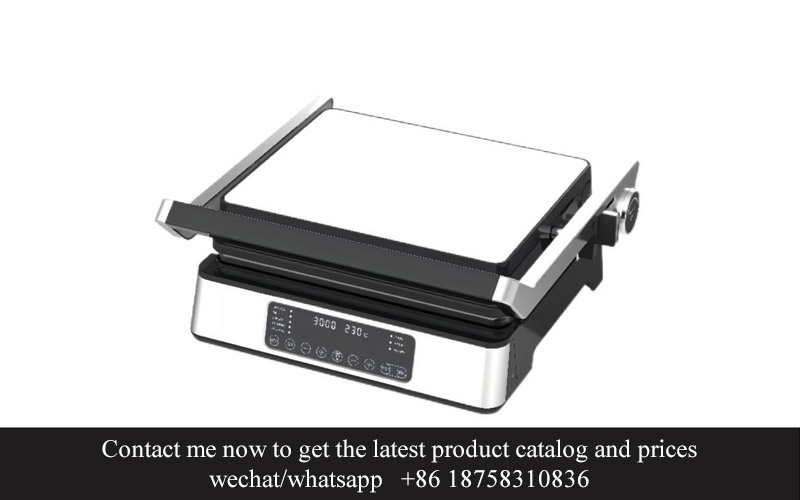
In the ever-evolving landscape of kitchen appliances, the industrial panini press has emerged as a versatile and innovative tool that has captured the hearts of both home chefs and commercial kitchens alike. As we delve into the world of industrial panini presses, it’s clear that the future holds exciting possibilities and a commitment to innovation remains at the forefront.
The integration of smart technology into industrial panini presses is a trend that’s gaining momentum. Imagine a press that not only seals your sandwiches to perfection but also adjusts its temperature and pressure settings based on the type of food being cooked. This level of customization is not just convenient; it’s a game-changer for those who demand precision in their culinary creations.
Energy efficiency is another key factor shaping the future of industrial panini presses. With the growing awareness of environmental impact, manufacturers are focusing on creating appliances that consume less energy without compromising on performance. From energy-saving modes to eco-friendly materials, these presses are designed to reduce the carbon footprint while keeping the cost of operation low.
The rise of health-conscious consumers has also influenced the design of industrial panini presses. We’re seeing a trend towards healthier cooking options, with presses that offer adjustable cooking temperatures to cater to low-carb, gluten-free, and vegan diets. These appliances are not just about cooking sandwiches; they’re becoming a cornerstone for a healthier lifestyle in the kitchen.
One cannot overlook the importance of user experience in the future of industrial panini presses. The interface is becoming more intuitive, with touchscreens and digital displays replacing traditional dials and buttons. This not only makes the appliances easier to use but also allows for real-time feedback and monitoring, ensuring that every press is a success.
In the commercial sector, the demand for portable and compact industrial panini presses is on the rise. These presses are perfect for food trucks, cafes, and pop-up restaurants, where space is limited but the need for high-quality sandwiches is not. The convenience of these compact units is matched by their durability and efficiency, making them a favorite among mobile food vendors.
Customization is another area where industrial panini presses are expected to grow. From branded designs to unique features that cater to specific market needs, manufacturers are focusing on creating presses that can be tailored to individual businesses. This level of personalization not only enhances brand identity but also ensures that each kitchen has the perfect tool for its specific requirements.
Safety features are also becoming a focal point in the development of industrial panini presses. With the potential for high temperatures and pressure, ensuring that these appliances are safe to use is paramount. From automatic shut-off mechanisms to non-slip bases, the industry is investing in safety innovations that give users peace of mind.
The integration of social media and online connectivity is poised to become a standard feature in future industrial panini presses. Imagine being able to share your culinary creations with the world directly from your press. This could include live cooking demonstrations, sharing recipes, or even connecting with other users for tips and tricks. The potential for community building and social engagement is vast.
As we look ahead, the future of industrial panini presses is bright. The industry is committed to pushing boundaries, offering new features, and staying ahead of consumer demands. Whether it’s through smart technology, eco-friendly designs, or user-centric innovations, the industrial panini press is poised to continue its rise as a must-have kitchen appliance.
In conclusion, the future of industrial panini presses is about embracing innovation, sustainability, and the evolving needs of consumers. As these appliances continue to evolve, they will not only enhance the culinary experience but also contribute to a more connected and eco-conscious world.